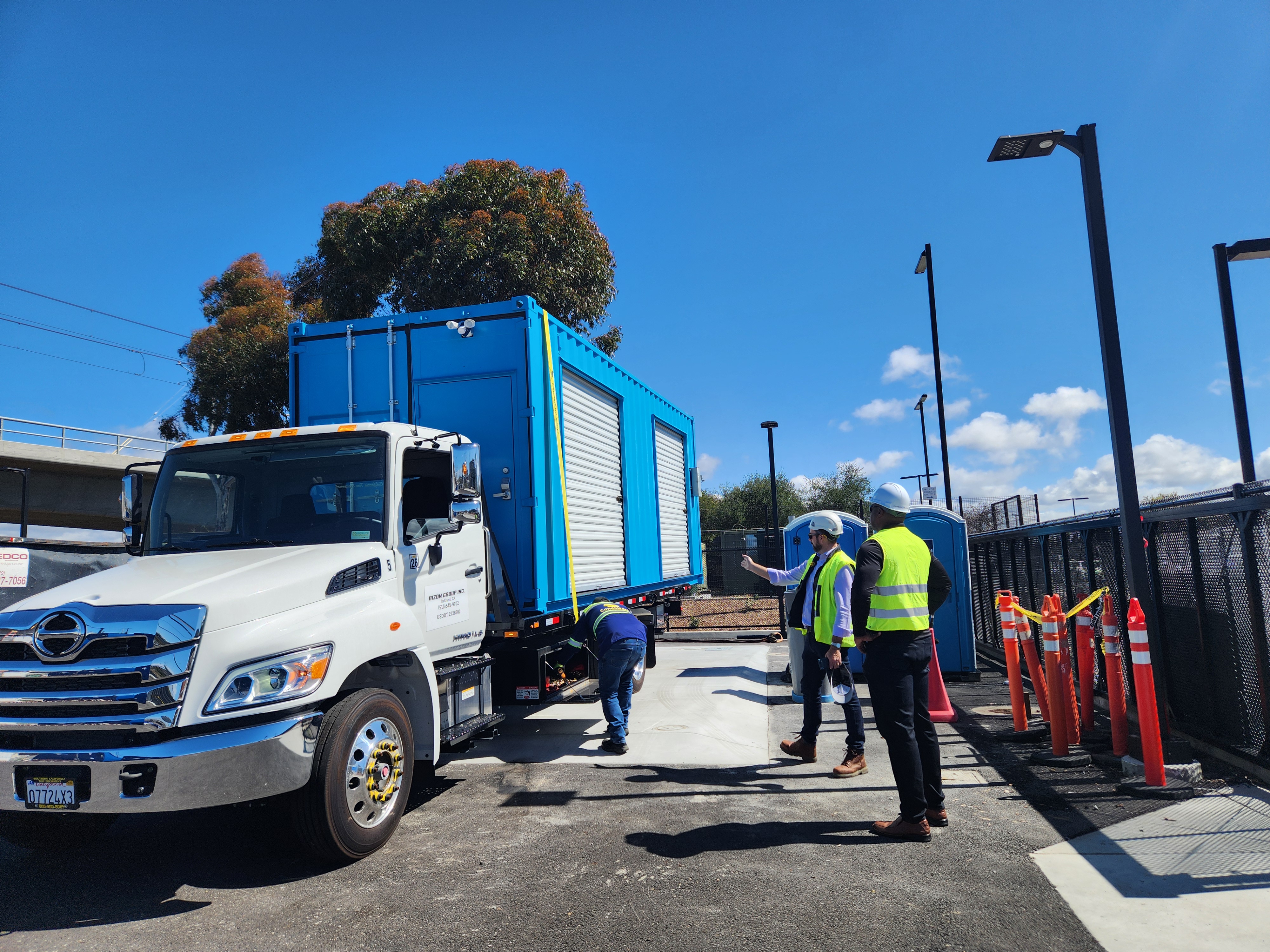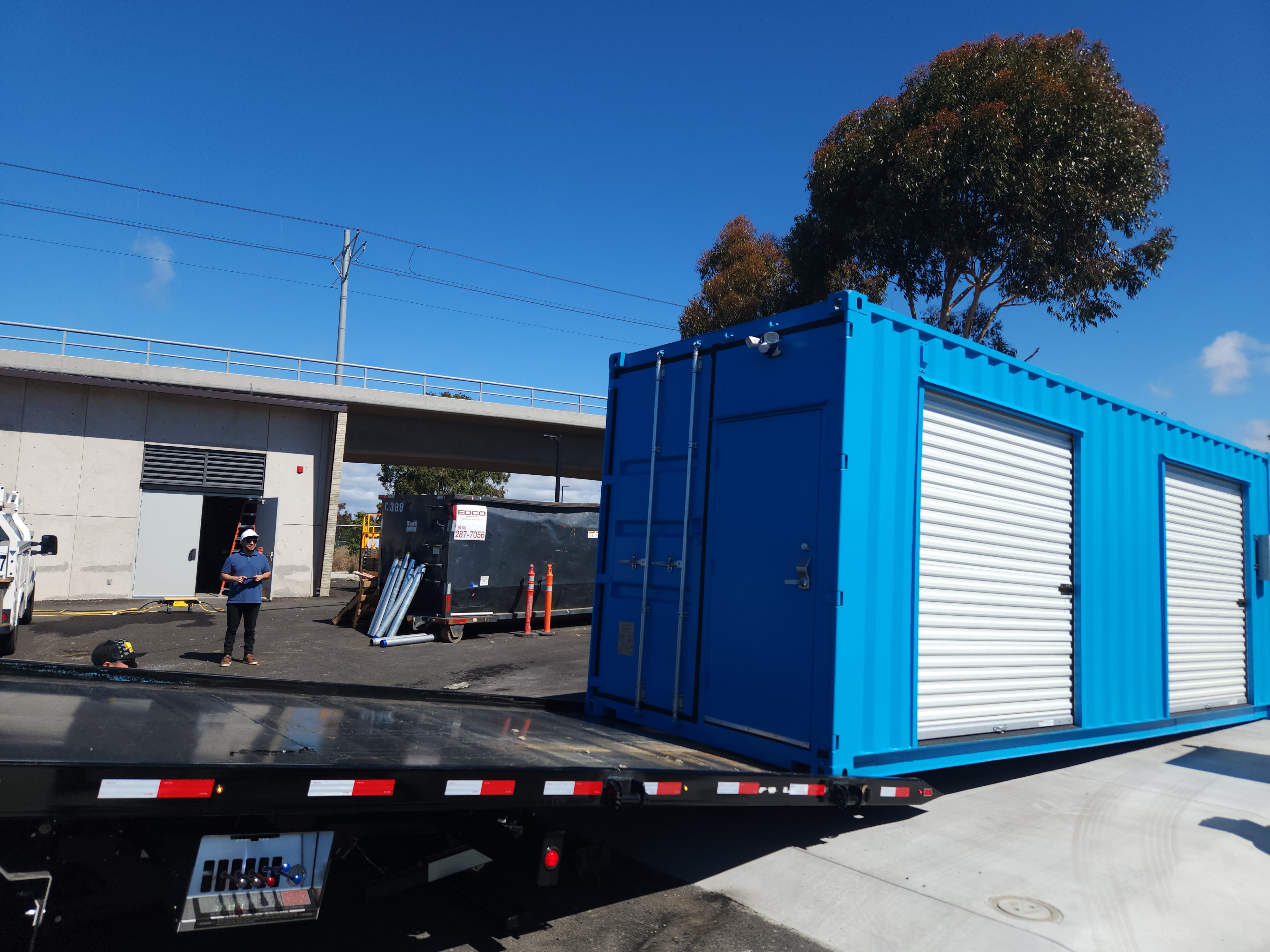Research
- Energy Storage
- Fusion Energy
- Energy Sciences
- Renewable Energy
- Fuel Cells
- Carbon Management
- Videos
Carbon Blade is taking its carbon dioxide removal (CDR) technology to the next stage by partnering with UC San Diego on a pilot study. In order to meet the global climate goal of limiting global warming by 1.5-2.0°C above pre-industrial levels, carbon dioxide must be removed from our atmosphere. Carbon Blade has developed a strategic way to remove carbon dioxide from the atmosphere at a low cost by using off-the-shelf components, operating at ambient temperature and pressure, and using renewable energy sources. The captured carbon dioxide can be stored or used at the source.
 |
 |
| Image 1. Arrival of the the enclosure; CEO of Carbon Blade - Joshua Franklin (rt) and engineering partner - Coffman Engineers |
Image 2. Enclosure being unloaded at the East Campus DERConnect/ESIL Site |
The Carbon Blade DAC system is packaged in a 24-foot container and operates in a cyclic process. An air contactor equipped with rotating blades sits on top of the container which draws in atmospheric air and captures the carbon dioxide through a capture solution that is distributed to the rotating blades. The capture solution and carbon dioxide are separated through chemical processes that require significantly less energy than other DAC technologies.
UC San Diego is providing Carbon Blade with a demonstration site at the newly constructed Power Islanding and Energy Storage Integration Lab (ESIL) located next to the East Campus Utilities Plant. UC San Diego researchers will be operating the direct air capture system and will be utilizing the captured carbon dioxide to produce a byproduct that will be turned into blocks on site.
This demonstration will allow Carbon Blade to validate their prototype build and gather the required data to make adequate modifications to their design. The UC San Diego research group will be documenting the performance of the DAC system in a cycle-by-cycle manner by keeping track of the following parameters:
1) CO2 capture efficiency to flow rate of capture solution ratio
2) Gaseous CO2 purity
3) Energy consumption per kilogram of CO2 captured
4) Total CO2 produced (captured) in 24 hours
5) Amount of make-up water required for operation
Research Team
Principal Investigator, Michael Ferry
Pedro Castilla, Research Engineer